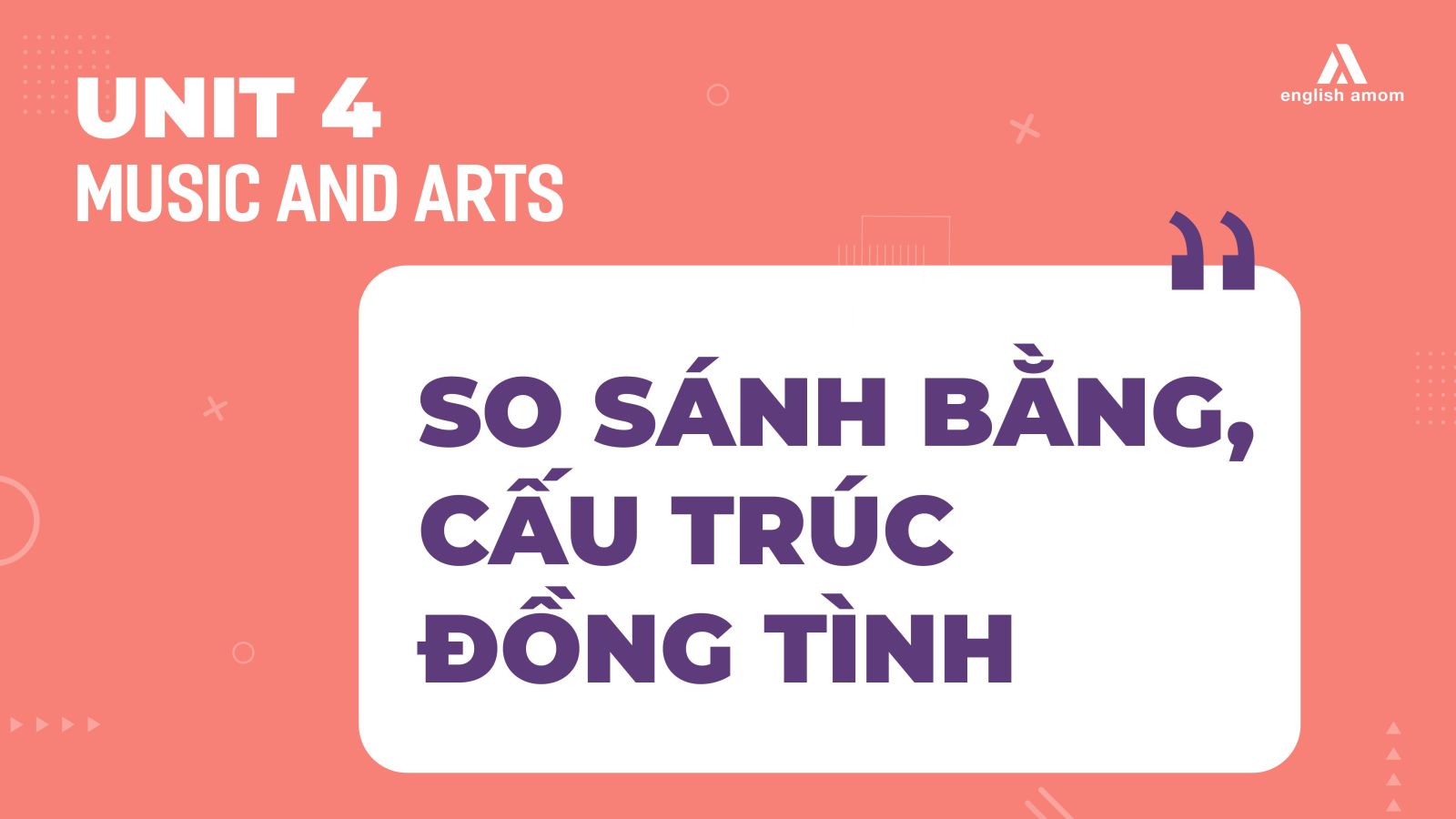
► Kênh hỏi đáp và giải thích thắc mắc kiến thức MIỄN PHÍ → truy cập LINK NHÓM: ENGLISH AMOM
► Kênh YOUTUBE hệ thống toàn bộ bài giảng CLIPS: truy cập LINK: ENGLISH AMOM CHANNEL
► Kênh TIKTOK: ENGLISH AMOM
I. LÝ THUYẾT
A) SO SÁNH BẰNG
1) Khái niệm so sánh bằng
► So sánh bằng hay Comparison of equality là một cấu trúc câu thường được dùng khi muốn so sánh các sự vật, sự việc, con người có tính chất ngang bằng. Có thể sử dụng so sánh bằng để so sánh hai hoặc nhiều sự vật, sự việc với nhau.
2) So sánh bằng giữa tính từ hoặc trạng từ
| Cấu trúc | Ví dụ |
Thể khẳng định:S + be + as + adj + as + ... S + V + as + adv + as + ... |
Lan speaks English as well as he does. I am as big as my brother |
Thể phủ định:S + be + not + as/so + adj + as + ... S + V + not + as /so+ adv + as + ... |
Sai Gon is not as cold as Ha Noi. My brother is not as handsome as me. |
3) Cách sử dụng the same as và different from
► Để nói về sự giống nhau hay tương tự nhau, ta dùng: (be) the same as + N/ Pronoun
Ví dụ: This book is the same as that one.
► Để nói về sự khác nhau, ta dùng: (be) + different from + N/ pronoun
Ví dụ: Her laptop is different from yours.
B) CẤU TRÚC ĐỒNG TÌNH
1) Cách sử dụng Too
► Too (cũng, củng vậy, cũng thế) thường được đặt ở cuối câu, mang nghĩa khẳng định.
► Too sử dụng để diễn tả sự thêm vào: S + V, S + V, too
Ví dụ: I love Math and I love English, too.
► Too sử dụng để diễn tả sự đồng tình, đồng ý: S + V, too.
Ví dụ: He is full.
2) Cách sử dụng Either
► Either (cũng không) thường được đặt ở vị trí cuối câu, dùng trong câu mang nghĩa phủ định, diễn tả sự thêm vào.
Ví dụ: He doesn't, either.
► Either thường được sử dụng như sau: S + V (not) + ... and S + V (not) + ... either.
Ví dụ: I don’t like the green hat and I don’t like the blue one either.
► Either sử dụng để diễn tả sự đồng tình, đồng ý: S + V (not) + , either.
Ví dụ: I don't hate popcorn.
I don't, either.
II. BÀI TẬP
2) Put one of these phrases in each gap in the passage ( Page 41)
|
friendly as the same as (2) as narrow as |
different from as quiet as |
MY HOMETOWN TODAY
My hometown has changed a lot - it's definitely not (1).................. it was before. It's not (2) ..................it was 5 years ago. It's much more noisy, but I prefer it now. There are more shops and restaurants. The restaurants are (3) .................. the ones we had before. Now we can eat many different kinds of food - Italian, French, and even Mexican! There have been so many changes. Even the streets are not (4) ..................they were before. They are wider now to make space for the extra traffic. One thing hasn't changed though. The people here are as warm and (5) ..................before. That's one thing that's (6) ..................it was before.
ĐÁP ÁN:
|
1. the same as |
2. as quiet as |
3. different from |
|
4. as narrow as |
5. friendly as |
6. the same as |
4) Complete the following sentences with 'too' or ‘either' ( Page 42)
1. My friend likes photography, and I like it............................
2. My mother doesn't enjoy horror films, and my sister doesn't............................
3. I was not allowed to go to the show, and my classmates were not............................
4. I love country music, and I like rock and roll............................
5. When I finish painting my room, I'll do the kitchen....................
ĐÁP ÁN:
| 1. too | 2. either | 3. either | 4. too | 5. too |

